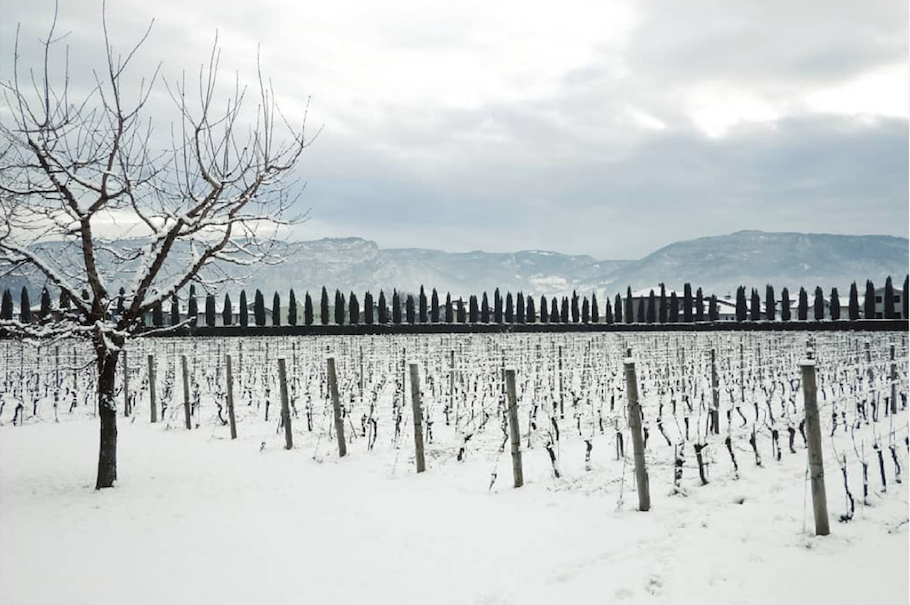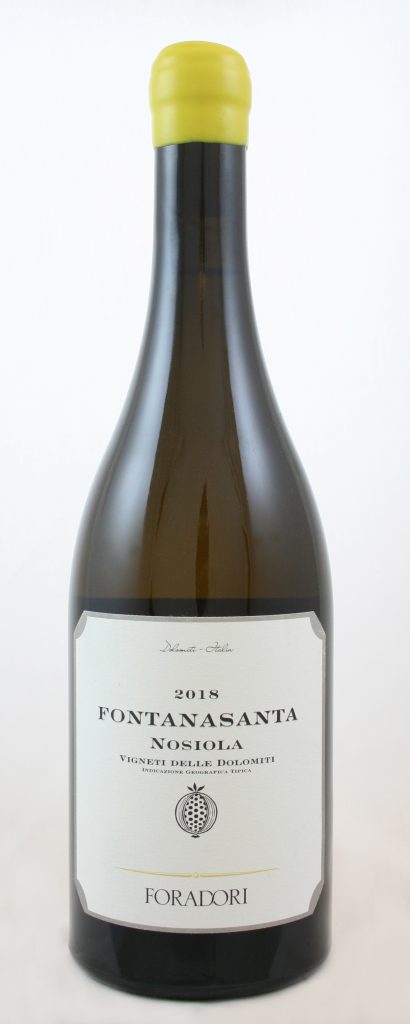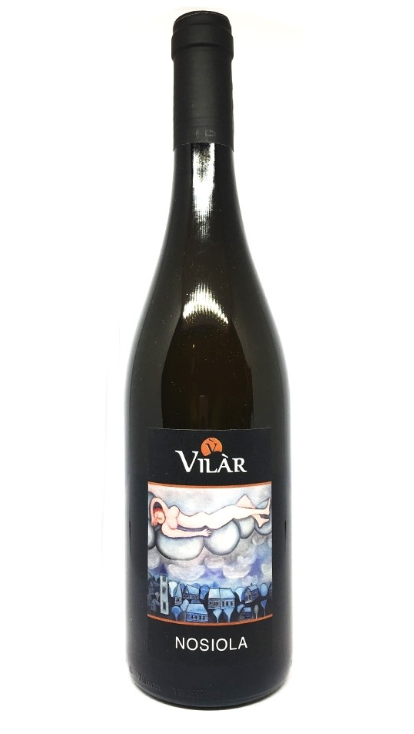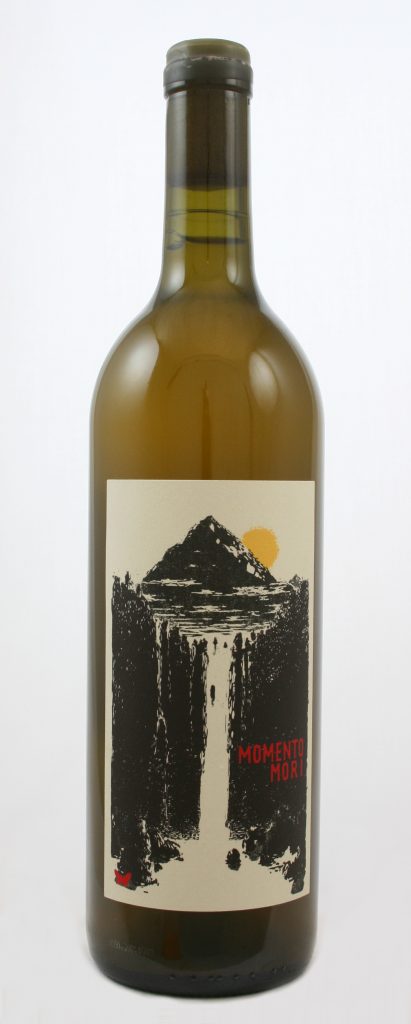The under-appreciated Trentino grape
Ampelographers believe that the name Nosiola is derived from the Italian word nocciola (hazelnut) which could be a reference to the characteristic toasted hazelnut aromas that pure varietal examples of Nosiola exhibit. According to Wikipedia it could also be a reference to the grape berries themselves since, unlike most white grape varieties, they don’t turn a dark, raisin brown when very mature. Another theory is that the name is a corruption of ociolet which in the local dialect of the Trentino regions means “little eyes” and was associated with the (likely now extinct) 18th-century wine grape Uva dell Occhia Bianco name meant “white eye’s grape” and may have been related to Nosiola.
Whatever its origins, Nosiola tends to produce delicately aromatic light-bodied wines. These notes can include citrus, apricot and peach fruit flavours as well as those characteristic subtle hazelnut notes.
It is a variety that expresses itself best in poor soil vineyards, cultivating wines of great delicacy and longevity.
Nosiola is an ancient Trentino grape variety, once spread throughout the region and whose cultivation has since been restricted to the areas of Valle dei Laghi, Colline di Trento and Pressano. It is a variety that expresses itself best in poor soil vineyards, cultivating wines of great delicacy and longevity.

Elisabetta Foradori has been a champion of this comparatively unloved grape. In the past, Nosiola was always vinified on the skins. She says: “The possibility of cultivating ‘real’ grapes, rich in energy thanks to the biodynamic practices undertaken in the vineyard and the extraordinary strength of the amphora, means that now we have the possibility to undertake an ancient style of winemaking. The amphora (Tinaja from Villarrobledo, Spain), with its shape and the porosity of the clay that it is made from, allows the wine to be in contact with the skins over a longer period of time. This is the true expression of the Nosiola, which is revealed slowly, requiring patience and time.”
Magnificently subtle and hauntingly pure, this is a wine that takes you on a journey.
The Foradori Fontanasanta Nosiola, from a vineyard on limestone-clay soils, is an exercise in restraint. The grapes are destemmed but not pressed: whole berries ferment spontaneously in the amphora.

The resulting wine’s colour is the colour of shaved almond. The nose reminds one of white blossom and green olive, while on the palate there is a gentle salinity. It’s slender and delicate, yet generous and gracious, as are so many wines that are shaped by clay vessels. Magnificently subtle and hauntingly pure, this is a wine that takes you on a journey. It is best appreciated from a carafe or tasted over the period of a few days.
Vini Dolimitici are 11 producers united by friendship, solidarity, and a common vision of agriculture in the Trentino. Their desire is to promote the region’s diversity and originality with respect for nature and ethical concerns. Foradori is a member of this gang, and Luigi Vilar is another. Vilar has always been a winegrower and winemaker. He started with his family estate in Isera before starting his own vineyard. He now has 4ha planted with local varieties such as Nosiola, Marzemino, Lagrein and Teroldego.

Vilar’s Nosiola is from rocky soils over clay at 430m above sea level. The grapes are destemmed and fermented with their own yeasts in stainless steel tank after two days of skin contact. The malolactic happens naturally, there is no filtration or fining and only a small amount of sulphur added. The wine is light yet perfumed and lifted. Slightly nutty, vegetal and a hint of smoke on the nose with restrained. The palate is ripe, with juicy fruit flavours and vegetal, nutty and slightly smoky white tea notes on the finish.

Our third Nos is care of New Zealander Dane Johns (who worked with the great Bill Downie) and worked many years as a barista in Melbourne where he learned about roasting and the nuances of blending and flavour infusion. He was also a musician, making electronic music and then moving towards the analogue version (much like his winemaking). He then worked several vintages for Bress Winery in Victoria and was also an alumnus of the brilliant independent wine shop(s) called Blackhearts and Sparrows where he got to taste a lot of natural wines from around the world.
His philosophy is simple:
‘I’m just trying to make wines as pure and as clean as I can, without adding anything at all. That includes sulphur. I kind of like the constraints of not using sulphur…I guess it’s like farming organically, it instantly ensures you can only do things gently and in small batches. It’s not a philosophy that I think everyone should be using but it works for me, allowing me to adhere to more simple and gentle practices.’
The fruit for his Nosiola is grown by the Chalmers Family Vineyard in the Mt Camel ranges in northern Heathcote. Experimental blocks were planted here to around 30 different grape varieties (mostly Italian) a few years ago. Dane works closely with the Chalmers Family to achieve the quality of fruit they require each year. They are meticulous in the vineyard, using organic viticulture practices and have decades of knowledge growing alternative varieties in Australia.
Dane would pay tribute to the inspiration of Foradori in this wine, which is delicate yet complex, with hints of musk, pear, orange blossom, orange peel, ginger spice and a limey finish.
Dane’s Nosiola is split between three small stainless-steel tanks, each vinified in markedly different ways before being blended back together 8 months later. There is, naturally, a proportion of skin contact in this blend. Everything is done naturally, all indigenous yeasts, ambient, no filtration or sulphur added.
Dane would pay tribute to the inspiration of Foradori in this wine, which is delicate yet complex, with hints of musk, pear, orange blossom, orange peel, ginger spice and a limey finish.
*
Interested in finding out more about the wines mentioned? Contact us directly:
shop@lescaves.co.uk | sales@lescaves.co.uk | 01483 538820


